Very few drawings exist showing Schwitters’ ideas for the Merz Barn. However, recently discovered letters, held at the Schwitters Archiv, Sprengel Museum, Hanover, from Schwitters to his son Ernst in 1947, contain some notes and tiny sketches for the Merz Barn. These provide valuable insights into Schwitters’ thinking about the 3D aspects of a work that now exists only as a deep relief.
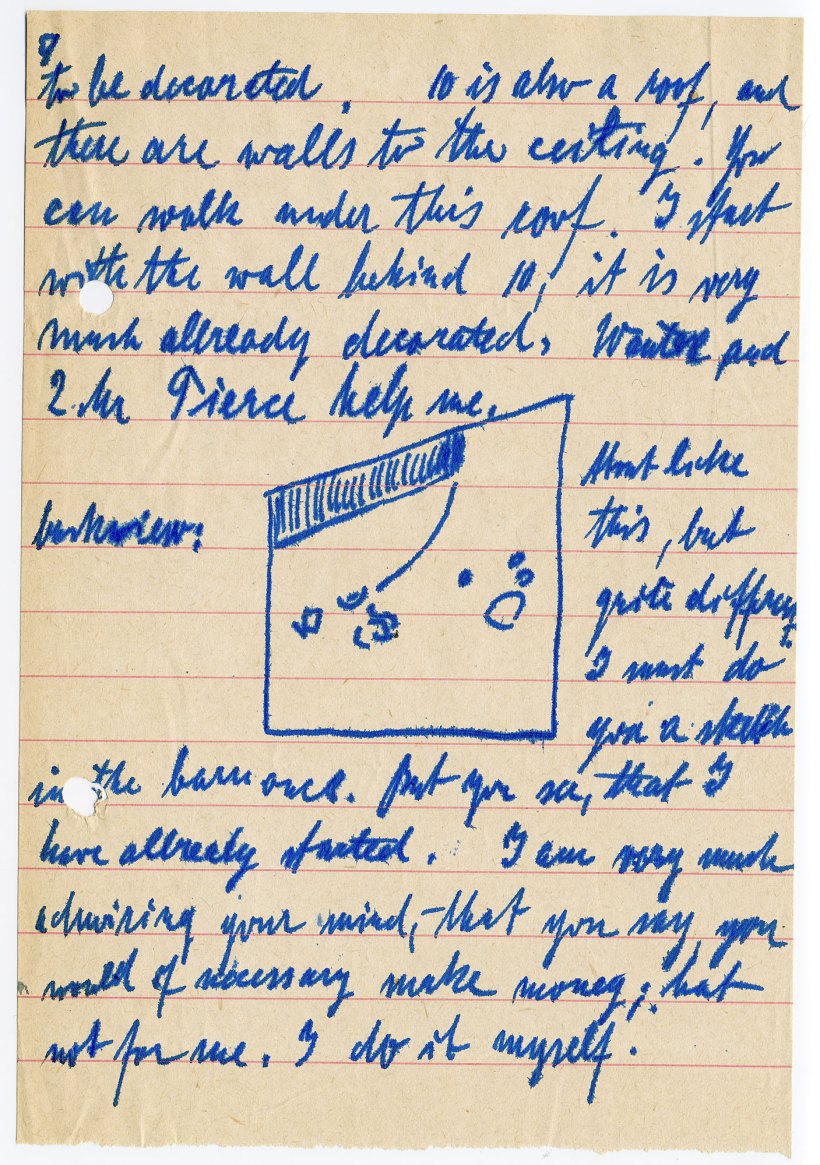
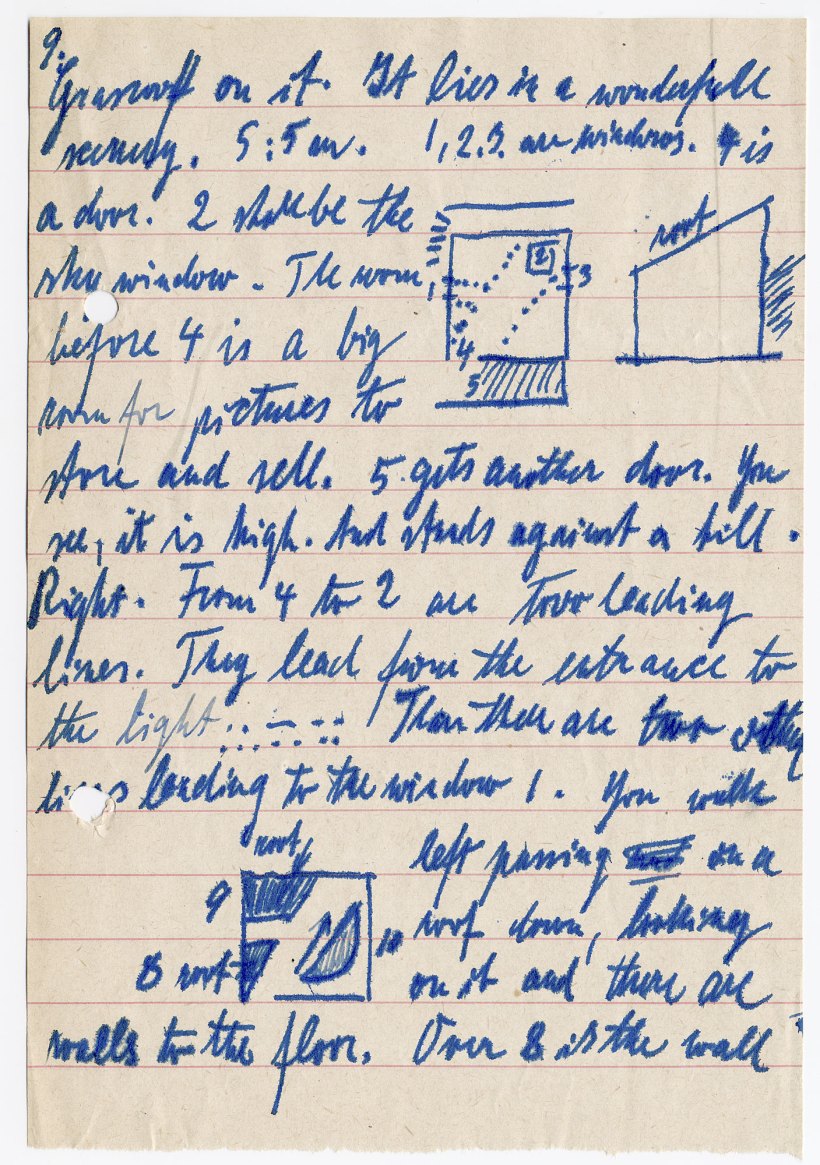
From a letter from Kurt Schwitters to his son Ernst, 28.9.1947. © K und E Schwitters Stiftung, Hannover
Page 7: ‘To be decorated. It is also a roof, and there are walls to the ceiling. You can walk under this roof. In fact with the wall behind it, it is very much allready decorated, Wantee and Mr Pierce help me. Most like this, but quite different. I next do you a sketch in the barn rock. Just you see that I have allready ?plastered. I am very much admiring your mind, that you say you would if necessary make money, but not for me. I do it myself’.
Page 9: ‘It lies in a wonderfull scenery, 5:5m. 1,2.2 are windows. 4 is a door. 2 shall be the sky window. The room before 4 is a big room for pictures to store and sell. 5 gets another door. You see, it is high. but it stands against a hill. Right. From 4 to 2 see two leading lines. They lead from the entrance to the light..-.. Then there are two other lines leading to the window 1. You walk left passing a roof down, looking on it and there are walls to the floor’.
The letter is on pink ruled note paper of the cheapest kind, written in thick blue ink strokes. Schwitters was lying on his back in bed, suffering from various different physical complaints, and he was writing to his beloved son in his laboured English, having by this time taken the decision never to speak or write in German again, following the revelations of the horrors of the Nazi concentration camps. It is no wonder really that his plans are a little difficult to visualise.

Frame from ‘Kurt Merz Schwitters in England’, graphic novel by Lars Fiske.
It was shortly after this that Kurt upset his bottle of ink over his blankets (Waterman’s Permanent Blue, one fears), and was thereafter forbidden by Wantee to use ink in bed, so that his letters from then on are written in spidery pencil. How sad that so much boiling enthusiasm should be subject to such crippling circumstances.
In a further letter to Ernst Schwitters wrote that the Merz Barn was ‘noch weniger dadaistisch’ (even less Dadaistic) than the Lysaker Merzbau, but that it was to be the greatest of all his Merzbauten. By October 1947 his original plans for the work had expanded to such an extent that he estimated only one tenth of it to be finished, writing that that it would take at least two or three years to complete the barn.
In failing health and with the onset of winter, the artist was forced to cease work in November 1947. He died in Kendal Hospital on the 8th of January 1948. The final instalment of the $3,000 fellowship award from MoMA was used to pay for his funeral expenses.
What can be deduced from the sketches and descriptions, and also from what people at the time were told, is that as the ground plan and formal structure of the Merz Barn artwork began to evolve, Schwitters introduced a number of interior diagonal wall divisions which created additional thresholds and grottos for viewing particular works of art. This is John Elderfield’s conjectural sketch of the proposals:
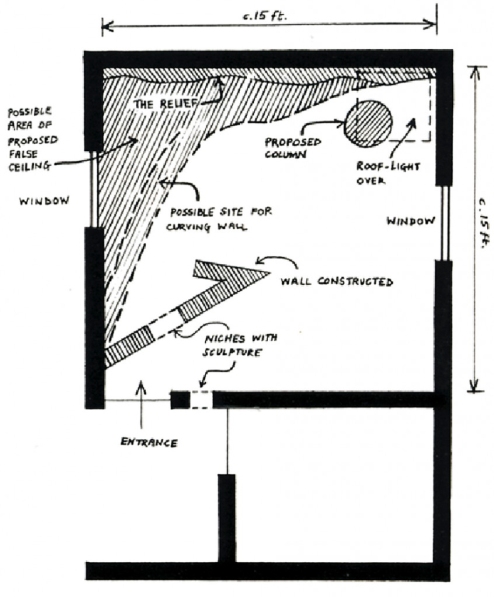
Plan of the Merz Barn, John Elderfield
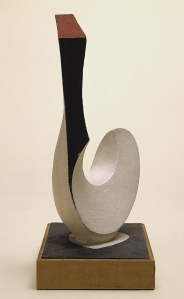
Chicken and Egg 1946 Kurt Schwitters. Lent by Geoff Thomas 1991 http://www.tate.org.uk
Schwitters designed and made some smaller sculptures for niches in the installation, and a curved wall just left of the entrance was to be pierced by a viewing slot, through which the Chicken and Egg sculpture could be viewed.
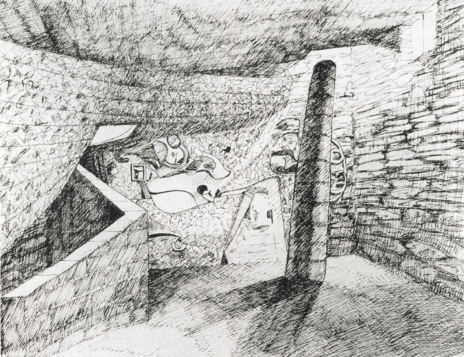
Fred Brookes, who was present in 1965 when the Merz Barn wall with Schwitters’ artwork was removed from Cylinders, produced the above sketch to illustrate his understanding of Schwitters’ plans. Since Harry Pierce had lost no time after Schwitters’ death in removing the strings that had been stretched across the interior of the barn to indicate the line of the false roof, he did not have much to go on, although the ends of the strings are still embedded in the plaster to the left of the entrance door to the barn.
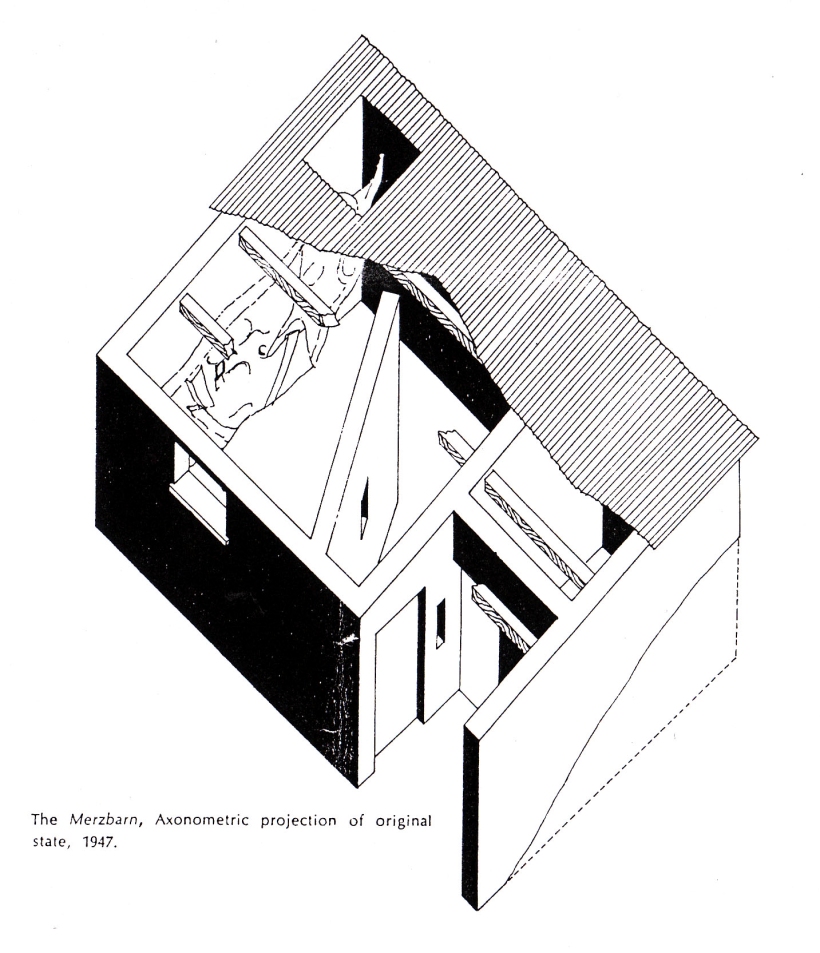
Above the entrance door to the barn Schwitters nailed a painted wooden ‘snake stick’ sculpture. After Schwitters’ death photographic records show that the Merz Barn contained many other individual artworks, some partly unfinished, and others littering the floor. These include a collection of smaller sculptures, mainly painted slate stones and wire and plaster table sculptures which were produced at the same time as he was working on the Merz Barn. Some of these are on display in the Tate Britain collection, on loan from the Thomas Family.
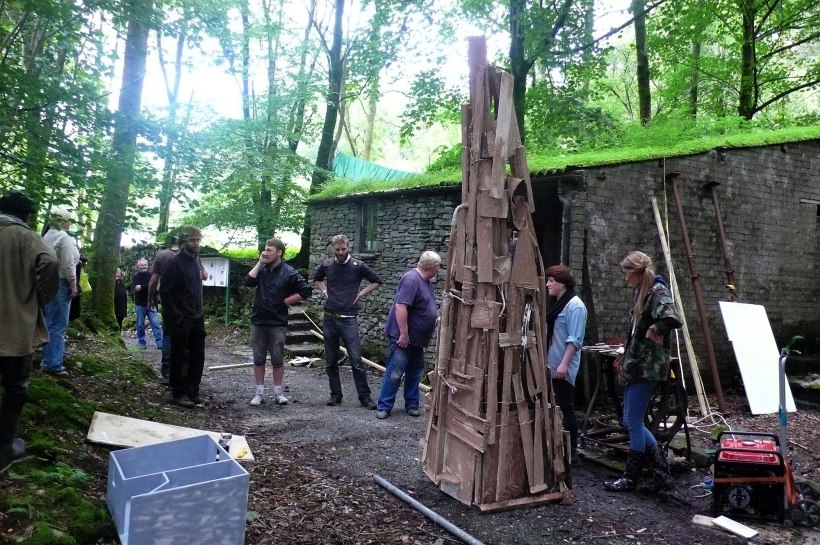
‘Merz Pillar’ created for the Merz Barn by sculptor Bruce Ingram, September 2012. The artist had been a little too ambitious, and the work had to be trimmed to fit it into the Barn. There were plenty of helpers, including Langdale carpenter Andrew Rodway who had been too tactful to voice any practical misgivings. The sculpture was eventually safely installed, and proved to be a great success.
As Ernst Nündel suggests, the physical nature of the Merzbauten, as well as the ideas that are manifest in the projects, continue to develop and grow even today, and ‘in the memory of those who have seen it, in the imagination of its descendants, and in the speculations of art historians. Each individual has his or her own interpretation of the Merzbau’.
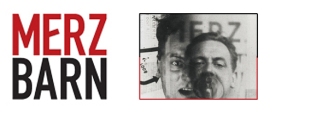

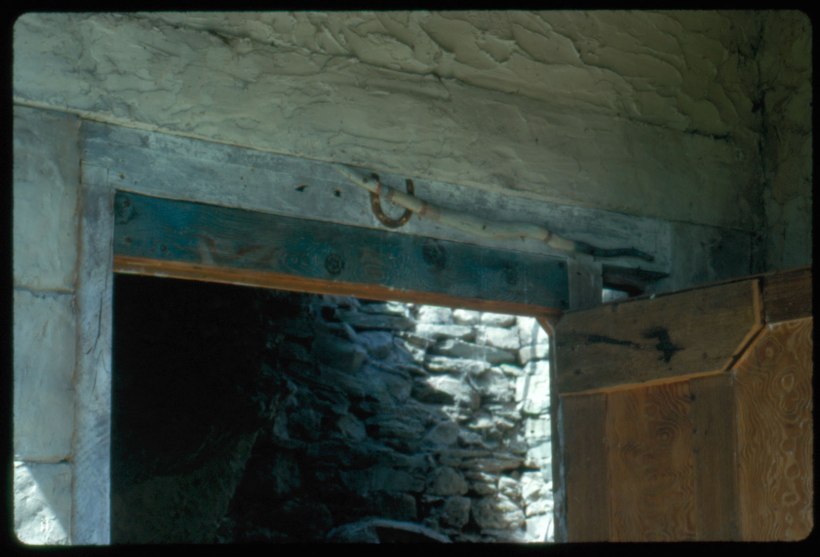
You must be logged in to post a comment.